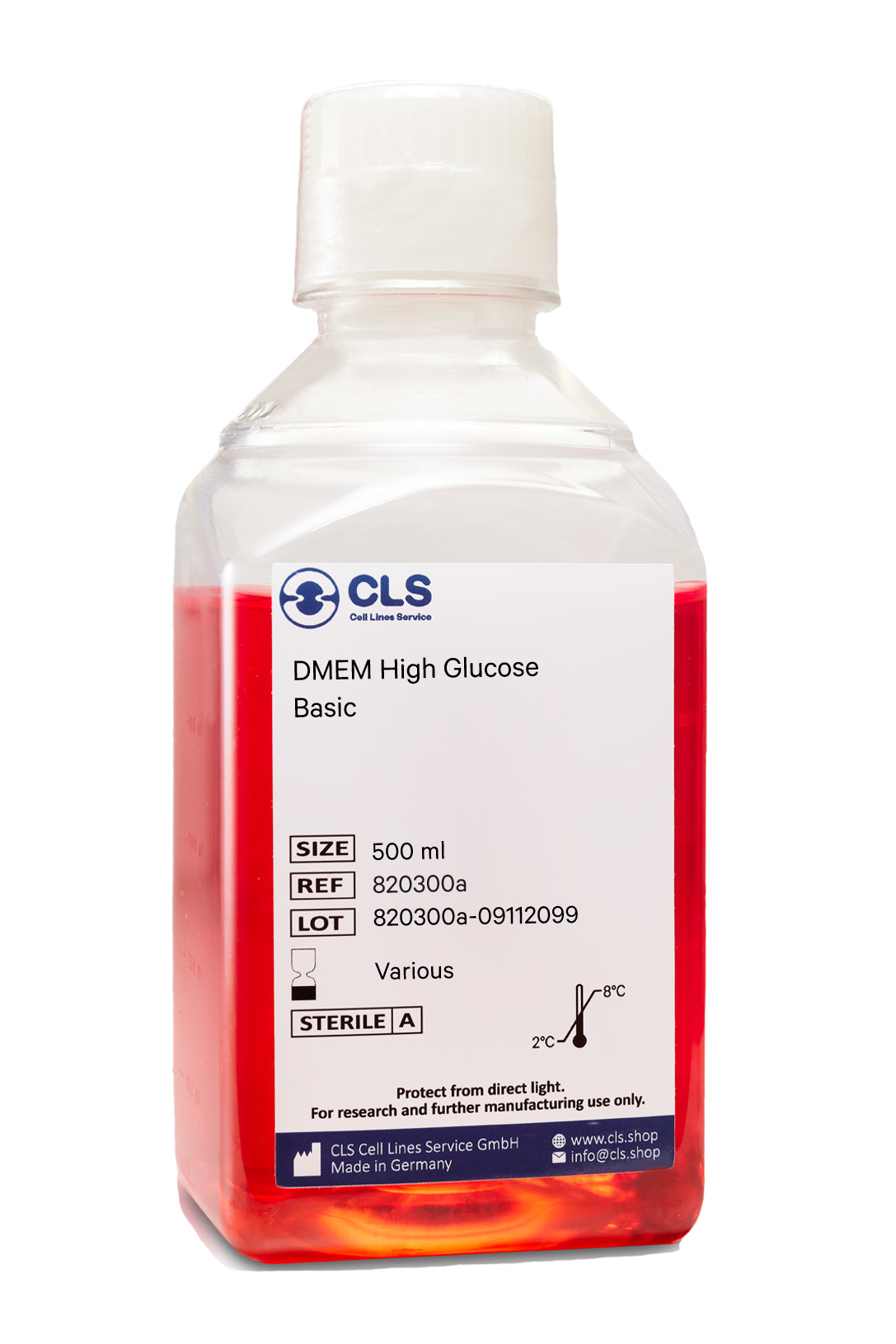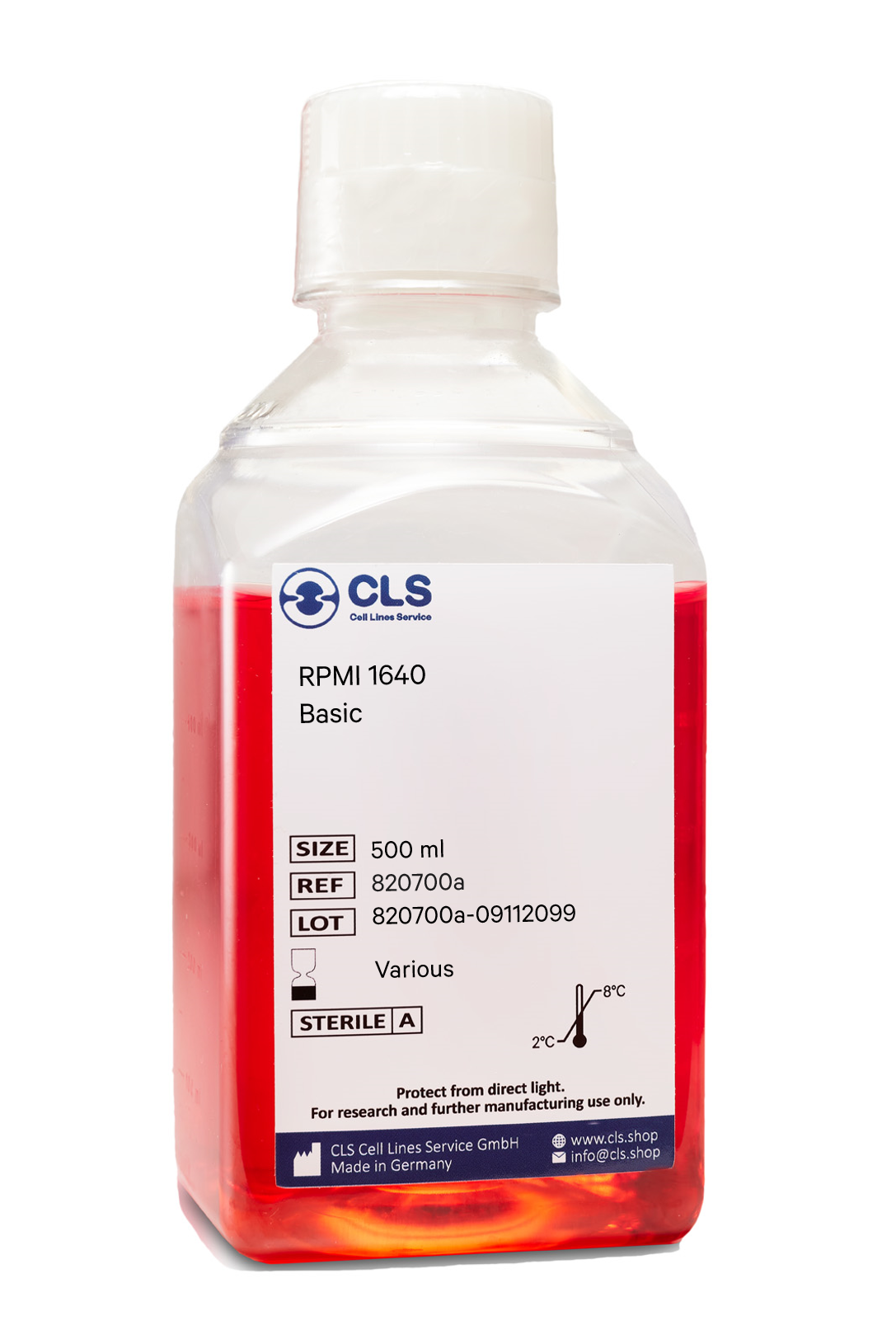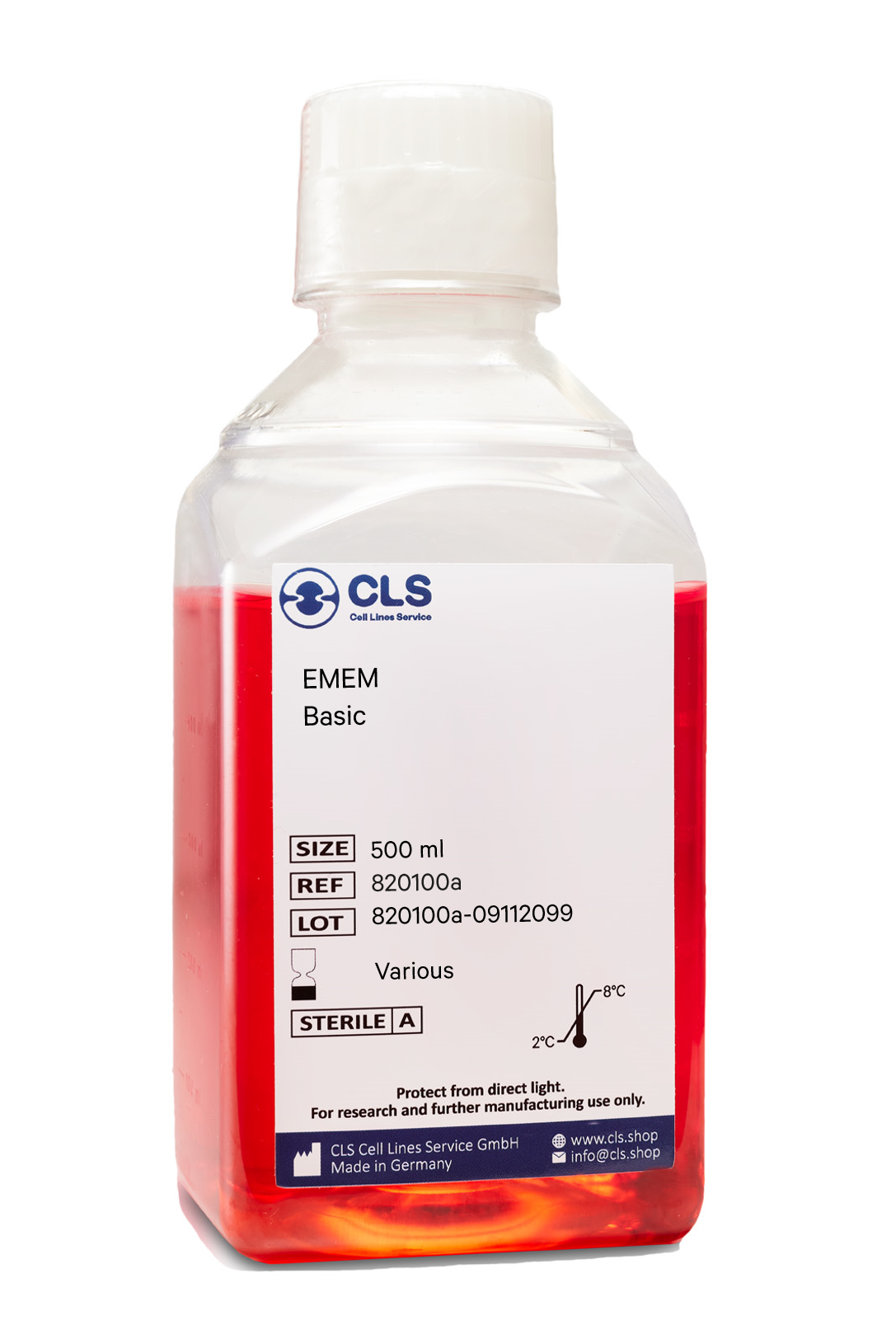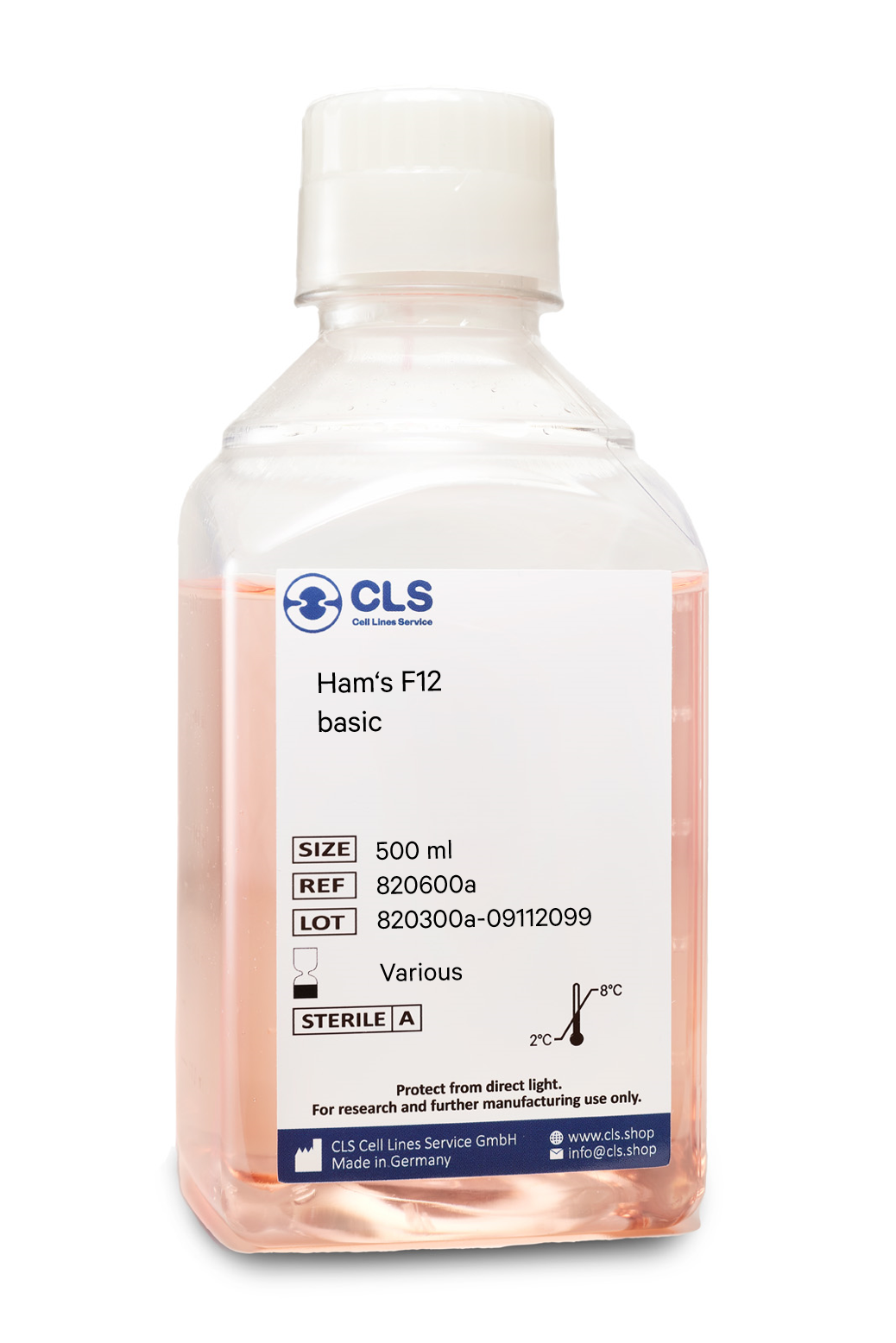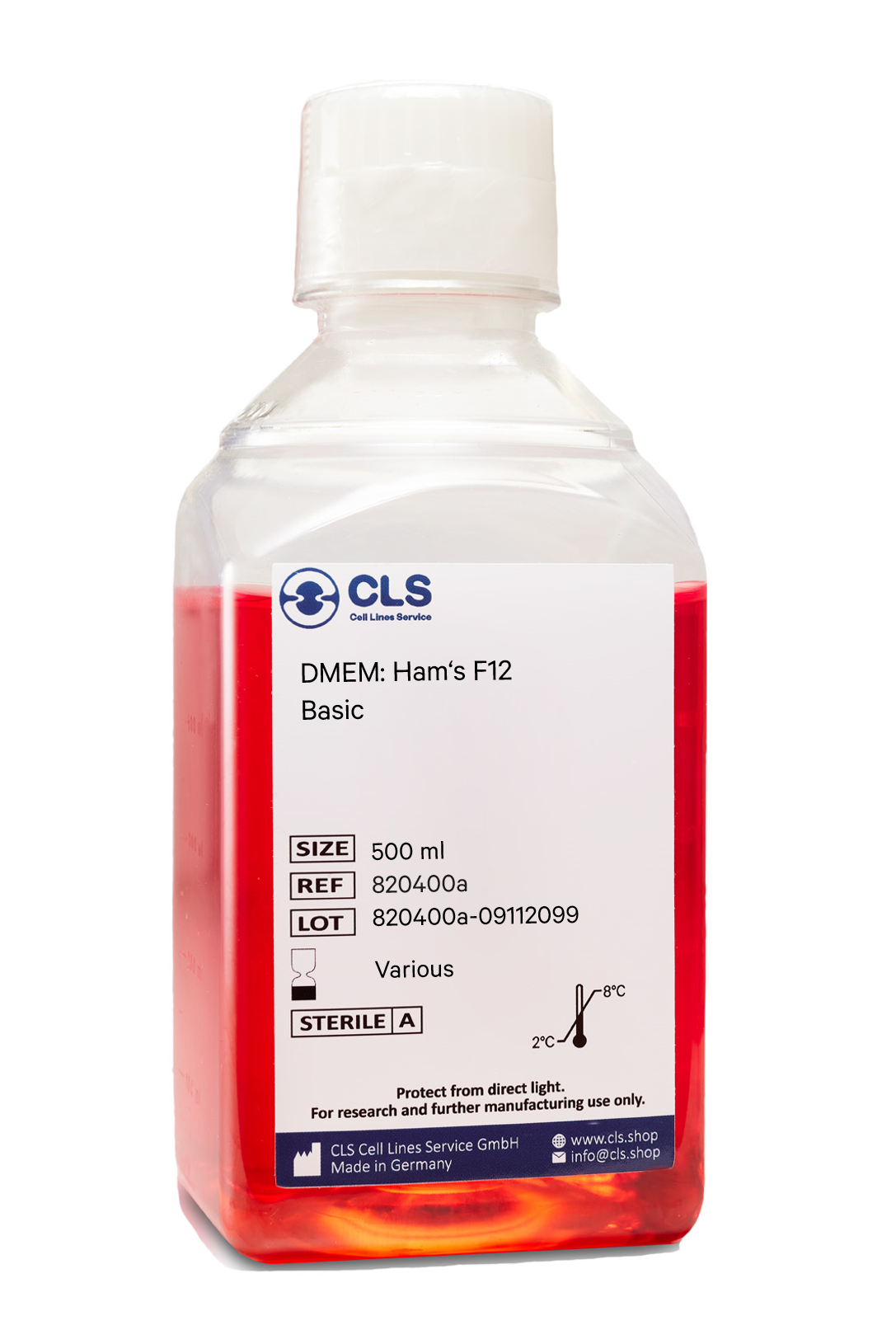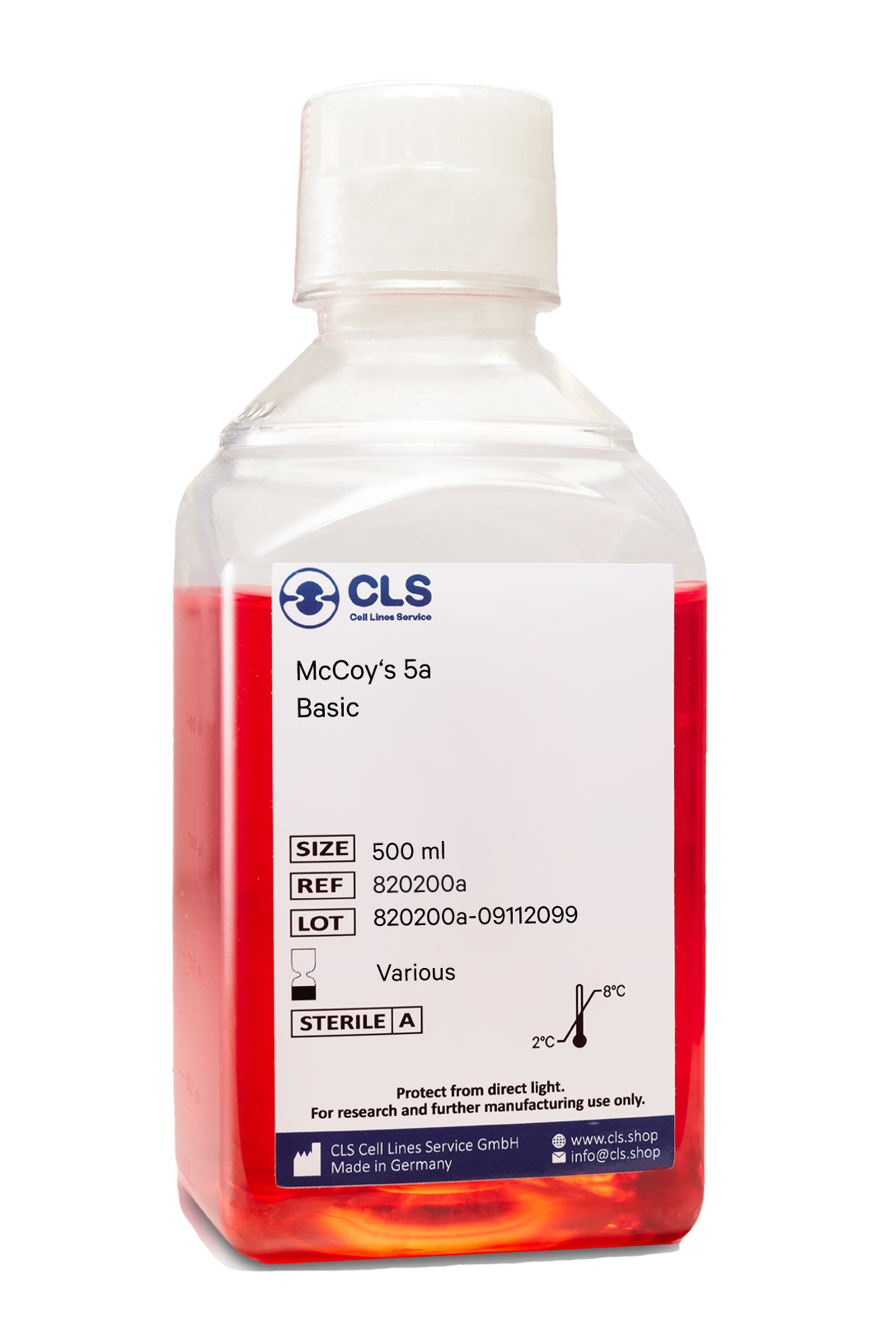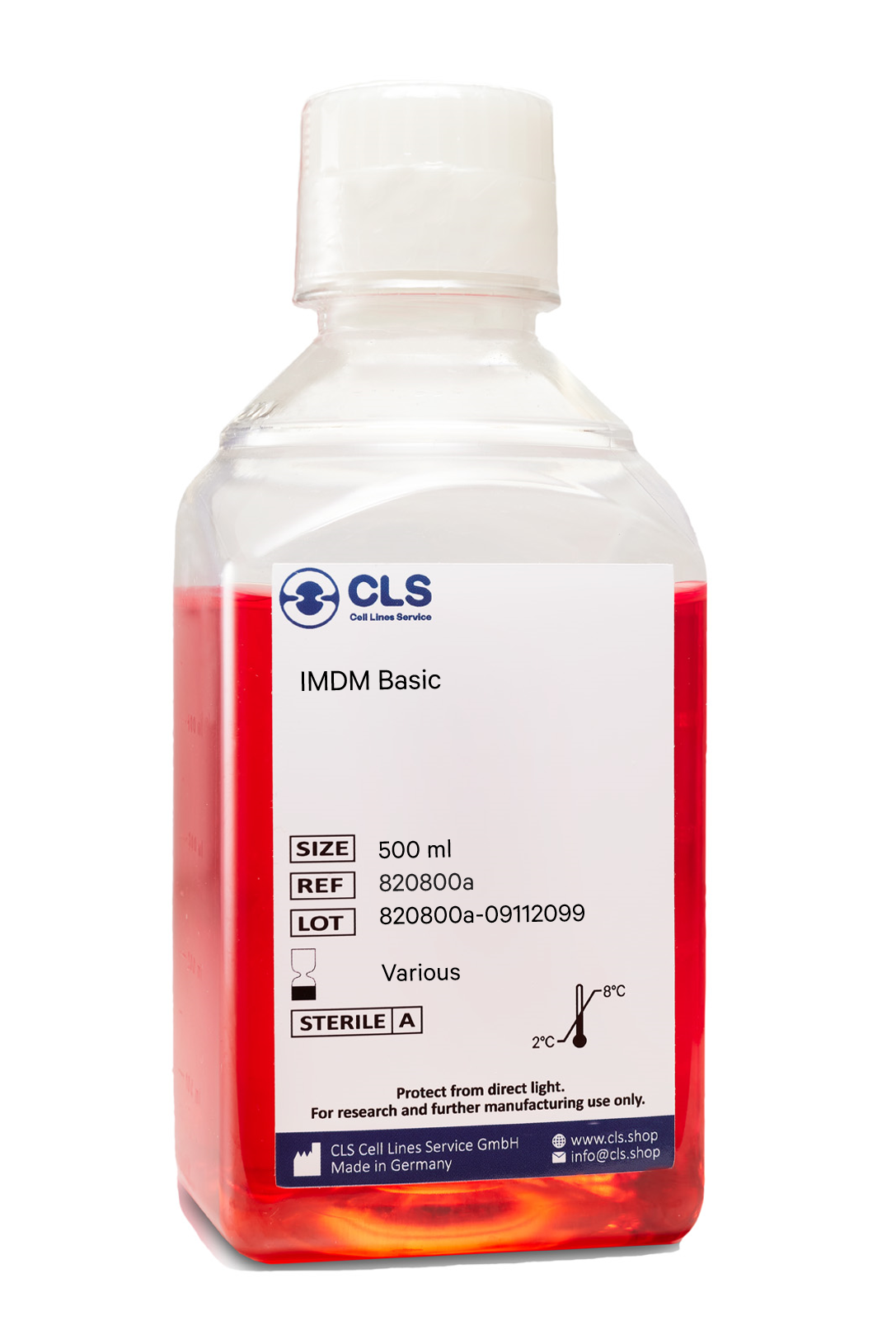Cell Culture Medium
Cultured cells require meticulous environmental control for successful growth and maintenance. A comprehensive approach involves ensuring sterility, nutrient provision, pH stability, and temperature control.
Sterile Conditions and Nutrient Supply
To prevent contamination and ensure cell viability, a sterile environment is crucial. This is typically achieved through aseptic techniques and specialized equipment such as laminar flow hoods. Nutrients are supplied via culture media, which contain a blend of essential ingredients, including:
- Inorganic Salts: Vital for maintaining osmotic balance and providing necessary ions for cellular activities.
- Carbohydrates: Serve as energy sources; glucose is the most commonly used sugar.
- Amino Acids: The building blocks of proteins; some are essential and cannot be synthesized by cells.
- Vitamins: Act as co-factors for enzymatic reactions; B vitamins are essential for cell metabolism.
- Fatty Acids and Lipids: Essential components for cell membrane integrity and function.
- Proteins and Peptides: In serum-free media, these replace the growth factors and binding proteins typically supplied by serum.
- Serum: Often included as a source of growth factors, although serum-free alternatives are gaining popularity to reduce variability and contamination risks.
- pH and Temperature Stability: Cells typically require a pH range of 7.2-7.4 for optimal growth. This is regulated by buffering systems, which can be either CO2/bicarbonate-based or chemically achieved using agents like HEPES. Temperature is maintained around 37°C to mimic physiological conditions.
Media Variants and Optimization
Over the years, various basal media have been developed to cater to specific cell types:
- Balanced Salt Solutions: Form the foundation of more complex media formulations.
- Basal Media, Such as Minimum Essential Medium (MEM), are used for primary cultures and diploid cells.
- Complex Media: Like RPMI 1640, they are suited for a broader range of mammalian cells.
- Serum-Free Media: Tailored for specific applications, reducing the risk of contamination from animal-derived components.
Media Preparation and Quality Control
Media can be prepared in-house from essential ingredients or purchased as ready-made solutions. Quality control involves ensuring the absence of contaminants and the proper concentration of ingredients. Reconstitution of powdered media requires high-grade water, and prepared media must be sterilized, typically by filtration.
Serum Use and Safety Considerations
Serum use, particularly fetal bovine serum (FBS), is common due to its rich content of growth factors. However, due to concerns about diseases like BSE, stringent testing and sourcing protocols are followed to ensure safety.
Regulatory Guidelines and Trends
Regulations guide animal-derived materials in cultures, emphasizing the importance of sourcing and testing. The trend towards eliminating such materials where possible is reflected in developing serum-free and animal-free media alternatives.
In conclusion, cell culture media play a fundamental role in the growth and maintenance of cells in vitro. Each component is carefully selected and optimized to mimic the in vivo environment, ensuring that cells have growth, survival, and functionality conditions.
What sets DMEM apart from other media is its unique composition. It contains an impressive fourfold increase in amino acid and vitamin concentration compared to the original Eagle's Minimal Essential Medium. Initially developed with low glucose (1 g/L) and sodium pyruvate, DMEM is frequently employed with higher glucose levels, either with or without sodium pyruvate. Notably, DMEM does not contain proteins, lipids, or growth factors, necessitating supplementation. To achieve optimal growth, a common approach is to supplement DMEM with 10% Fetal Bovine Serum (FBS). Additionally, DMEM employs a sodium bicarbonate buffer system (3.7 g/L), requiring a 5-10% CO2 environment to maintain a physiological pH.
Dulbecco's Modified Eagle Medium (DMEM) is highly regarded among defined media for cell and tissue culture, catering to the growth needs of various adherent cell phenotypes. It surpasses the original Eagle's Medium, developed in the 1950s for cultivating chicken cells, through the enhanced supplementary formulation known as Dulbecco's modification. This modification significantly elevates the content of select amino acids and vitamins up to fourfold compared to the original medium.
In the field of cell culture, DMEM plays a vital role as a growth medium for different cell types, including primary cells, stem cells, and transformed cells. Researchers also employ the modified version of DMEM for a wide array of research applications, such as drug discovery, tissue engineering, and the study of cell signaling pathways.
Quality control
pH = 7.2 +/
- 0.02 at 20-25°C.
Each lot has been tested for sterility and absence of mycoplasma and bacteria.
Maintenance
Keep refrigerated at +2°C to +8°C in the dark. Freezing and warming up to +37° C minimize the quality of the product.
Do not heat the medium to more than 37° C or use uncontrollable sources of heat (e.g., microwave appliances).
If only a part of the medium is to be used, remove this amount from the bottle and warm it up at room temperature.
Shelf life for any medium except for the basic medium is 8 weeks from the date of manufacture.
Composition
Components
mg/L
Inorganic Salts
Calcium chloride anhydrous
200,00
Iron (III) nitrate x 9H2O
0,10
Magnesium sulfate anhydrous
97,66
Potassium chloride
400,00
Sodium chloride
6.400,00
Sodium dihydrogen phosphateanhydrous
108,69
Other Components
D(+)-Glucose anhydrous
4.500,00
Sodium pyruvate
110,00
Phenol red
15,00
NaHCO3
1.500,00
Amino acids
L-Arginine x HCl
84,00
L-Cystine x 2HCl
62,58
L-Glutamine
584,00
Glycine
30,00
L-Histidine x HCl x H2O
42,00
L-Isoleucine
104,80
L-Leucine
104,80
L-Lysine x HCl
146,20
L-Methionine
30,00
L-Phenylalanine
66,00
L-Serine
42,00
L-Threonine
95,20
L-Tryptophan
16,00
L-Tyrosine x Na
103,79
L-Valine
93,60
Vitamins
D-Calcium pantothenate
4,00
Choline chloride
4,00
Folic acid
4,00
myo-Inositol
7,00
Nicotinamide
4,00
Pyridoxine x HCl
4,00
Riboflavin
0,40
Thiamine x HCl
4,00
Initially designed to support the growth of human leukemic cells in both suspension and monolayer cultures, RPMI 1640 Medium has evolved through modifications by researchers and commercial suppliers to become suitable for a diverse range of mammalian cells. It is exceptionally compatible with cell lines such as HeLa, Jurkat, MCF-7, PC12, PBMC, astrocytes, and carcinomas.
RPMI 1640 Medium stands apart from other cell culture media due to its unique composition. It contains a substantial amount of phosphate, amino acids, and vitamins. Notably, it encompasses biotin, vitamin B12, and PABA, absent in Eagle's Minimal Essential Medium or Dulbecco's Modified Eagle Medium. Moreover, RPMI 1640 Medium exhibits significantly elevated concentrations of vitamins inositol and choline. However, it does not contain proteins, lipids, or growth factors. Consequently, supplementation with 10% Fetal Bovine Serum (FBS) is commonly required to provide optimal conditions for cell growth.
The buffering system of RPMI 1640 Medium relies on sodium bicarbonate (2.0 g/L) and necessitates a 5-10% CO2 environment to maintain a physiologically appropriate pH. The inclusion of the reducing agent glutathione further distinguishes this medium from others.
This RPMI 1640 medium contains 4.5 grams per liter of glucose.
Quality control
pH = 7.2 +/
- 0.02 at 20-25°C.
Each lot has been tested for sterility and absence of mycoplasma and bacteria.
Maintenance
Keep refrigerated at +2°C to +8°C in the dark. Freezing and warming up to +37° C minimize the quality of the product.
Do not heat the medium to more than 37° C or use uncontrollable sources of heat (e.g., microwave appliances).
If only a part of the medium is to be used, remove this amount from the bottle and warm it up at room temperature.
Shelf life for any medium except for the basic medium is 8 weeks from the date of manufacture.
Composition
Components
mg/L
Inorganic Salts
Calcium nitrate x 4H2O
100,00
Magnesium sulfate anhydrous
48,83
Potassium chloride
400,00
Sodium chloride
5450,00
di-Sodium hydrogen phosphate
800,49
Other Components
D(+)-Glucose anhydrous
4500,00
Glutathione (red.)
1,00
HEPES
2383,00
Phenol red
5,00
Sodium pyruvate
110,00
Amino Acids
L-Arginine x HCl
241,86
L-Asparagine x H2O
56,82
L-Aspartic acid
20,00
L-Cystine x 2HCl
65,19
L-Glutamine
300,00
L-Glutamic acid
20,00
Glycine
10,00
L-Histidine x HCl x H2O
20,27
L-Hydroxyproline
20,00
L-Isoleucine
50,00
L-Leucine
50,00
L-Lysine x HCl
40,00
L-Methionine
15,00
L-Phenylalanine
15,00
L-Proline
20,00
L-Serine
30,00
L-Threonine
20,00
L-Tryptophan
5,00
L-Tyrosine x 2Na
28,83
L-Valine
20,00
Vitamins
p-Aminobenzoic acid
1,00
D-(+)-Biotin
0,20
D-Calcium pantothenate
0,25
Choline chloride
3,00
Folic acid
1,00
myo-Inositol
35,00
Nicotinamide
1,00
Pyridoxine x HCl
1,00
Riboflavin
0,20
Thiamine x HCl
1,00
Vitamin B12
0,01
NaHCO3
1500,00
This EMEM medium consists of 2 mM L-Glutamine, 1.5 g/L NaHCO3, EBSS, 1 mM Sodium pyruvate, and NEAA.
What's in EMEM?
EMEM is a modified version of Eagle's minimum essential medium, containing Earle's Balanced Salt Solution, non-essential amino acids, L-glutamine, sodium pyruvate, and sodium bicarbonate. It's important to note that this reduced level of sodium bicarbonate (NaHCO3, 1.5 g/L) is intended for use in 5% CO2 in the air. To maintain its effectiveness, storing the medium at two °C to 8°C in the dark when not in use is recommended.
What is EMEM used for?
Eagle's minimal essential medium (EMEM) is a cell culture medium that can maintain cells in tissue culture. The medium contains higher concentrations of amino acids, allowing for a more accurate approximation of the protein composition of cultured mammalian cells. EMEM may be used to cultivate various cells, including fibroblasts, human liver cancer cell line (HepG2) cells and human fetal brain progenitor-derived astrocyte cells (PDA). It is typically used in the presence of fetal bovine serum (FBS), calf, or horse sera.
How is EMEM different from other cell culture media?
While EMEM and Dulbecco's modified Eagle's medium (DMEM) share some similarities, they also differ. Both media lack protein and contain the amino acids, salts, glucose, and vitamins required to provide a cell with energy and maintain it in tissue culture. However, the DMEM formulation is modified to contain up to four times more vitamins and amino acids and two to four times more glucose than EMEM. It's worth noting that EMEM is also different from the original MEM formulation.
Quality control
pH = 7.2 +/
- 0.02 at 20-25°C.
Each lot has been tested for sterility and absence of mycoplasma and bacteria.
Maintenance
Keep refrigerated at +2°C to +8°C in the dark. Freezing and warming up to +37° C minimize the quality of the product.
Do not heat the medium to more than 37° C or use uncontrollable sources of heat (e.g., microwave appliances).
If only a part of the medium is to be used, remove this amount from the bottle and warm it up at room temperature.
Shelf life for any medium except for the basic medium is 8 weeks from the date of manufacture.
Composition
Components
mg/L
Inorganic Salts
Calcium chloride x 2H2O
264,92
Magnesium sulfate
97,67
Potassium chloride
400,00
Sodium chloride
6,800.00
Sodium dihydrogen phosphate x H2O
140,00
Other Components
D(+)-Glucose
1,000.00
Phenol red
10,00
Sodium pyruvate
110,00
NaHCO3
1,500.00
Amino Acids
L-Alanine
8,90
L-Arginine x HCl
126,00
L-Asparagine x H2O
13,20
L-Aspartic acid
13,30
L-Cystine
24,00
L-Glutamine
292,30
L-Glutamic acid
14,70
Glycine
7,50
L-Histidine x HCl x H2O
42,00
L-Isoleucine
52,00
L-Leucine
52,00
L-Lysine x HCl
72,50
L-Methionine
15,00
L-Phenylalanine
32,00
L-Proline
11,50
L-Serine
10,50
L-Threonine
48,00
L-Tryptophan
10,00
L-Tyrosine
36,00
L-Valine
46,00
Vitamins
D-Calcium pantothenate
1,00
Choline chloride
1,00
Folic acid
1,00
myo-Inositol
2,00
Nicotinamide
1,00
Pyridoxal x HCl
1,00
Riboflavin
0,10
Thiamine x HCl
1,00
One of its notable advantages is the ability to support cell growth without the need for serum supplementation. This eliminates potential interference caused by serum components, ensuring consistent and reliable experimental results. By providing a serum-free culture environment, Ham's F-12 Medium offers researchers greater control over their investigations.
Another key feature of Ham's F-12 Medium is its suitability for single-cell plating. This makes it an excellent choice for a variety of cell lines, including CHO cells, lung cells, and mouse L cells. The medium's optimized nutrient composition facilitates efficient attachment and growth of individual cells, enabling the establishment of homogeneous cell cultures with improved reproducibility.
Moreover, Ham's F-12 Medium has gained recognition as the preferred medium for the Clonal Toxicity Assay (CTA). This assay plays a critical role in assessing the cytotoxic effects of substances on cells. By utilizing Ham's F-12 Medium in the CTA, researchers can accurately evaluate the impact of various compounds or treatments on individual cells, providing valuable insights into toxicological profiles.
Quality control
pH = 7.2 +/
- 0.02 at 20-25°C.
Each lot has been tested for sterility and absence of mycoplasma and bacteria.
Maintenance
Keep refrigerated at +2°C to +8°C in the dark. Freezing and warming up to +37° C minimize the quality of the product.
Do not heat the medium to more than 37° C or use uncontrollable sources of heat (e.g., microwave appliances).
If only a part of the medium is to be used, remove this amount from the bottle and warm it up at room temperature.
Shelf life for any medium except for the basic medium is 8 weeks from the date of manufacture.
Composition
Components
mg/L
Inorganic Salts
Calcium chloride x 2H2O
44,00
Copper(II) sulfate x 5H2O
0,00
Iron (II) sulfate x 7H2O
0,83
Magnesium chloride x 6H2O
122,00
Potassium chloride
223,65
Sodium chloride
7599,00
di-Sodium hydrogen phosphateanhydrous
142,04
Zinc sulfate x 7H2O
0,86
Other Components
D(+)-Glucose anhydrous
1801,60
Hypoxanthine
4,08
Linoleic acid
0,08
DL-α-Lipoic acid
0,21
Phenol red
1,20
Putrescine x 2HCl
0,16
Sodium pyruvate
110,00
Thymidine
0,73
NaHCO3
1176,00
Amino Acids
L-Alanine
8,91
L-Arginine x HCl
210,70
L-Asparagine x H2O
15,01
L-Aspartic acid
13,31
L-Cysteine x HCl x H2O
35,12
L-Alanyl-L-Glutamine
217,30
L-Glutamic acid
14,71
Glycine
7,51
L-Histidine x HCl x H2O
20,96
L-Isoleucine
3,94
L-Leucine
13,12
L-Lysine x HCl
36,54
L-Methionine
4,48
L-Phenylalanine
4,96
L-Proline
34,53
L-Serine
10,51
L-Threonine
11,91
L-Tryptophan
2,04
L-Tyrosine
5,44
L-Valine
11,71
Vitamins
D(+)-Biotin
0,01
D-Calcium pantothenate
0,24
Choline chloride
13,96
Folic acid
1,32
myo-Inositol
18,02
Nicotinamide
0,04
Pyridoxine x HCl
0,06
Riboflavin
0,04
Thiamine x HCl
0,34
Vitamin B12
1,36
This unique formulation combines Dulbecco's Modified Eagle Medium (DMEM) and Ham's F-12 (Ham's Nutrient Mixture F-12) in a precise 1:1 ratio. The addition of L-glutamine further enhances its composition.
DMEM, derived from Eagle's Minimal Essential Medium (EMEM), offers an increased concentration of amino acids and vitamins compared to its predecessor. In contrast, Ham's F-12 is based on Ham's F-10 medium, providing a complementary set of essential components.
To support optimal cell growth, it is common practice to supplement DMEM:Ham's F12 with FBS at a typical concentration of 5-10%. This addition is necessary as the medium lacks growth hormones, lipids, and proteins crucial for cellular development.
DMEM:Ham's F12 incorporates a pH buffer system and is often supplemented with phenol red, a pH indicator. Cultured cells in DMEM:Ham's F12, or any medium utilizing the bicarbonate buffer system, require a controlled CO2 environment of 5-10% to maintain appropriate pH levels. Phenol red enables monitoring of pH changes from 6.2 (yellow) to 8.2 (red).
Quality Control
pH = 7.2 +/
- 0.02 at 20-25°C.
Each lot has been tested for sterility and absence of mycoplasma and bacteria.
Maintenance
Keep refrigerated at +2°C to +8°C in the dark. Freezing as well as warming up to +37°C minimize the quality of the product.
Do not heat the medium to more than 37°C or use uncontrollable sources of heat (e.g., microwave appliances).
If only a part of the medium is to be used, remove this amount from the bottle and warm it up at room temperature.
Shelf life for any medium except for the basic medium is 8 weeks from the date of manufacture.
Composition
Components
mg/L
Inorganic Salts
Calcium chloride x 2H2O
154,45
Iron(III)-nitrate x 9H2O
0,05
Iron(II)-sulfate x 7H2O
0,42
Potassium chloride
311,83
Copper(II)-sulfate x 5H2O
0.001
Magnesium chloride anhydrous
28,57
Magnesium sulfate
48,85
Sodium chloride
6,999.50
Sodium dihydrogen phosphate anhydrous
54,35
di-Sodium hydrogen phosphate
70,98
Zinc sulfate x 7H2O
0,43
Other Components
D(+)-Glucose anhydrous
3,151.00
HEPES
3,574.50
Hypoxanthine
2,04
Linoleic acid
0,04
DL-68-Lipoic acid
0.103
Sodium pyruvate
110,00
Phenol red
8,10
Putrescin x 2HCl
0.081
Thymidine
0,36
Amino Acids
L-Alanine
4,45
L-Arginine x HCl
147,35
L-Asparagine x H2O
7,50
L-Aspartic acid
6,65
L-Cystine x 2HCl
31,29
L-Cysteine x HCl x H2O
17,56
L-Glutamine
365,00
L-Glutamic acid
7,35
Glycine
18,75
L-Histidine x HCl x H2O
31,48
L-Isoleucine
54,37
L-Leucine
58,96
L-Lysine x HCl
91,37
L-Methionine
17,24
L-Phenylalanine
35,48
L-Proline
17,27
L-Serine
26,25
L-Threonine
53,55
L-Tryptophan
9,02
L-Tyrosine x 2Na x 2H2O
55,81
L-Valine
52,66
Vitamins
D-(+)-Biotine
0,004
D-Calcium pantothenate
2,12
Choline chloride
8,98
Folic acid
2,66
myo-Inositol
12,51
Nicotinamide
2,02
Pyridoxine x HCl
2,03
Riboflavin
0,22
Thiamine x HCl
2,17
Vitamine B12
0,68
NaHCO3
1,200.00
Ham's F-12K (Kaighn's) Medium is carefully formulated to optimize cell culture conditions. It features an enriched composition, providing elevated levels of essential components such as amino acids and sodium pyruvate, as well as additional elements including putrescine, thymidine, hypoxanthine, and zinc. These additions enable researchers to supplement the medium with minimal serum or defined components for specific cell types, facilitating precise experimental conditions.
Notably, Ham's F-12K (Kaighn's) Medium does not contain proteins or growth factors. Consequently, supplementation with growth factors and Fetal Bovine Serum (FBS) is often necessary, allowing researchers to tailor the medium to the requirements of their specific cell lines. For optimal performance, the concentration of FBS must be carefully optimized for each cell line, ensuring optimal growth and functionality.
To maintain physiological pH, Ham's F-12K (Kaighn's) Medium employs a sodium bicarbonate buffer system (2.5 g/L), necessitating a controlled 5-10% CO2 environment during cultivation. This ensures the medium's pH remains within the ideal range for cell growth and viability.
Quality control
pH = 7.2 +/
- 0.02 at 20-25°C.
Each lot has been tested for sterility and absence of mycoplasma and bacteria.
Maintenance
Keep refrigerated at +2°C to +8°C in the dark. Freezing as well as warming up to +37°C minimize the quality of the product.
Do not heat the medium to more than 37°C or use uncontrollable sources of heat (e.g., microwave appliances).
If only a part of the medium is to be used, remove this amount from the bottle and warm it up at room temperature.
Shelf life for any medium but the basic medium is 8 weeks from the date of manufacture.
Composition
Components
mg/L
Inorganic Salts
Calcium chloride x 2H2O
135,24
Copper(II) sulfate x 5H2O
0,00
Iron (II) sulfate x 7H2O
0,83
Magnesium chloride x 6H2O
105,72
Magnesium sulfate x 7H2O
394,49
Potassium chloride
283,29
Potassium dihydrogen phosphate
58,52
Sodium chloride
7597,20
di-Sodium hydrogen phosphateanhydrous
115,02
Zinc sulfate x 7H2O
0,14
Other Components
D(+)-Glucose anhydrous
1260,00
Hypoxanthine
4,08
DL-α-Lipoic acid
0,21
Phenol red
3,00
Putrescine x 2HCl
0,32
Sodium pyruvate
220,00
NaHCO3
2500,00
Thymidine
0,73
Amino Acids
L-Alanine
17,82
L-Arginine x HCl
421,40
L-Asparagine x H2O
30,02
L-Aspartic acid
26,62
L-Cysteine x HCl x H2O
70,24
L-Glutamine
292,20
L-Glutamic acid
29,42
Glycine
15,01
L-Histidine x HCl x H2O
41,92
L-Isoleucine
7,87
L-Leucine
26,24
L-Lysine x HCl
73,04
L-Methionine
8,95
L-Phenylalanine
9,91
L-Proline
69,06
L-Serine
21,02
L-Threonine
23,82
L-Tryptophan
4,08
L-Tyrosine
10,87
L-Valine
23,42
Vitamins
D(+)-Biotin
0,07
D-Calcium pantothenate
0,48
Choline chloride
13,96
Folic acid
1,32
myo-Inositol
18,02
Nicotinamide
0,04
Pyridoxine x HCl
0,06
Riboflavin
0,04
Thiamine x HCl
0,34
Vitamin B12
1,36
One prominent application of McCoy's 5A Medium is its utilization in the culturing of human colon carcinoma cell lines. Specifically, it has been employed in the study of the leucine-rich repeat-containing G-protein-coupled receptor (LGR5) and its role in the metastasis of colon cancer. This medium has been effectively employed in the cultivation of several colon carcinoma cell lines, including HCT116, RKO, FET, CBS, HCT116b, and TENN, enabling researchers to delve deeper into the mechanisms underlying colon cancer metastasis.
In addition to its application in cancer research, McCoy's 5A Medium has proven to be indispensable in the study of osteoblasts. Researchers investigating the ion reactivity of calcium-deficient hydroxyapatite in standard cell culture media have utilized this medium to culture osteoblasts. This application has facilitated a better understanding of the interactions between osteoblasts and calcium-deficient hydroxyapatite, contributing to advancements in the field of bone research.
Notably, McCoy's 5A Medium was meticulously formulated by modifying the amino acids found in Basal Medium Eagle to provide optimal support for liver tumor cells. This enriched formulation enables its suitability for a diverse range of established cell lines, as well as primary cells, further enhancing its versatility and applicability in various research settings.
Moreover, McCoy's 5A Medium extends its biochemical and physiological effects beyond liver tumor cells. It has been successfully employed to support growth in primary cultures of bone marrow, skin, gingiva, kidney, omentum, adrenal, lung, spleen, rat embryo, and other cell types. This wide range of applications attests to the broad utility of McCoy's 5A Medium in supporting the growth and maintenance of various cell types for comprehensive biological research.
Formulation
This McCoy's 5A medium (modified) contains 3.0 g/L of Glucose, stable Glutamine, 2.0 mM of Sodium pyruvate, and 2.2 g/L of NaHCO3.
Quality control
pH = 7.2 +/
- 0.02 at 20-25°C.
Each lot has been tested for sterility and absence of mycoplasma and bacteria.
Maintenance
Keep refrigerated at +2°C to +8°C in the dark. Freezing and warming up to +37° C minimize the quality of the product.
Do not heat the medium to more than 37° C or use uncontrollable sources of heat (e.g., microwave appliances).
If only a part of the medium is to be used, remove this amount from the bottle and warm it up at room temperature.
Shelf life for any medium except for the basic medium is 8 weeks from the date of manufacture.
Composition
Components
mg/L
Inorganic Salts
Calcium chloride x 2H2O
132,46
Magnesium sulfate x 7H2O
200,00
Potassium chloride
400,00
Sodium chloride
6,460.00
Sodium dihydrogen phosphate x H2O
580,00
Other Components
D(+)-Galactose anhydrous
3,000.00
Glutathione (red.)
0,50
Bacto-Peptone
600,00
Phenol red
10,00
Amino Acids
L-Alanine
13,36
L-Arginine x HCl
42,10
L-Asparagine x H2O
45,00
L-Aspartic acid
19,97
L-Cysteine
24,24
L-Glutamine stable
326,61
L-Glutamic acid
22,10
Glycine
7,50
L-Histidine x HCl x H2O
20,76
L-Hydroxyproline
19,70
L-Isoleucine
39,36
L-Leucine
39,36
L-Lysine x HCl
36,50
L-Methionine
14,90
L-Phenylalanine
16,50
L-Proline
17,30
L-Serine
26,30
L-Threonine
17,90
L-Tryptophan
3,10
L-Tyrosine
18,10
L-Valine
17,60
Vitamins
p-Aminobenzoic acid
1,00
Ascorbic acid
0,50
D(+)-Biotin
0,20
D-Calcium pantothenate
0,20
Choline chloride
5,00
IMDM is well suited for rapidly proliferating, high-density cell cultures, including Jurkat, COS-7, and macrophage cells. The various modifications of IMDM available for a range of cell culture applications can be found using the media selector tool. Liquid media provide essential nutrients for all cell culture applications. Each of our high-quality cell culture media is manufactured according to the initially published formula or modifications necessary to the consistent performance and stability of the culture medium.
IMDM vs. DMEM
IMDM contains potassium nitrate instead of ferric nitrate and HEPES and sodium pyruvate. The additional components in IMDM make it more suitable for specialized cell types and specific applications than DMEM.
IMDM vs. RPMI
IMDM and RPMI have different formulations that may be relevant for PMA/ionomycin stimulation. One significant difference is the concentration of Ca2+. While RPMI contains 0.42 mM Ca2+, IMDM contains 1.49 mM.
Quality control
pH = 7.2 +/
- 0.02 at 20-25°C.
Each lot has been tested for sterility and absence of mycoplasma and bacteria.
Maintenance
Keep refrigerated at +2°C to +8°C in the dark. Freezing and warming up to +37° C minimize the quality of the product.
Do not heat the medium to more than 37° C or use uncontrollable sources of heat (e.g., microwave appliances).
If only a part of the medium is to be used, remove this amount from the bottle and warm it up at room temperature.
Shelf life for any medium except for the basic medium is 8 weeks from the date of manufacture.
Composition
Components
mg/L
Inorganic Salts
Calcium chloride x 2 H2O
219,00
Potassium chloride
330,00
Potassium nitrate
0.076
Magnesium sulfate anhydrous
97,73
Sodium chloride
4,505.00
Sodium dihydrogen phosphate anhydrous
109,00
Sodium selenite
0,02
Other Components
D(+)-Glucose anhydrous
4,500.00
HEPES
5,958.00
Sodium pyruvate
110,00
Phenol red
15,00
Amino Acids
L-Alanine
25,00
L-Arginine x HCl
84,00
L-Asparagine x H2O
25,00
L-Aspartic acid
30,00
L-Cystine x 2HCl
91,24
L-Glutamine
584,00
L-Glutamic acid
75,00
Glycine
30,00
L-Histidine x HCl x H2O
42,00
L-Isoleucine
104,80
L-Leucine
104,80
L-Lysine x HCl
146,20
L-Methionine
30,00
L-Phenylalanine
66,00
L-Proline
40,00
L-Serine
42,00
L-Threonine
95,20
L-Tryptophan
16,00
L-Tyrosine x 2Na
104,20
L-Valine
93,60
Vitamins
D(+)-Biotin
0.013
D-Calcium pantothenate
4,00
Choline chloride
4,00
Folic acid
4,00
myo-Inositol
7,20
Initially designed to support the growth of human leukemic cells in both suspension and monolayer cultures, RPMI 1640 Medium has evolved through modifications by researchers and commercial suppliers to become suitable for a diverse range of mammalian cells. It is exceptionally compatible with cell lines such as HeLa, Jurkat, MCF-7, PC12, PBMC, astrocytes, and carcinomas.
RPMI 1640 Medium stands apart from other cell culture media due to its unique composition. It contains a substantial amount of phosphate, amino acids, and vitamins. Notably, it encompasses biotin, vitamin B12, and PABA, absent in Eagle's Minimal Essential Medium or Dulbecco's Modified Eagle Medium. Moreover, RPMI 1640 Medium exhibits significantly elevated concentrations of vitamins inositol and choline. However, it does not contain proteins, lipids, or growth factors. Consequently, supplementation with 10% Fetal Bovine Serum (FBS) is commonly required to provide optimal conditions for cell growth.
The buffering system of RPMI 1640 Medium relies on sodium bicarbonate (2.0 g/L) and necessitates a 5-10% CO2 environment to maintain a physiologically appropriate pH. The inclusion of the reducing agent glutathione further distinguishes this medium from others.
The unique composition of this RPMI formulation comprises 2.1 mM of stable Glutamine, 2.0 grams per liter of NaHCO3, and phenol red.
Quality control
pH = 7.2 +/
- 0.02 at 20-25°C.
Each lot has been tested for sterility and absence of mycoplasma and bacteria.
Maintenance
Keep refrigerated at +2°C to +8°C in the dark. Freezing and warming up to +37° C minimize the quality of the product.
Do not heat the medium to more than 37° C or use uncontrollable sources of heat (e.g., microwave appliances).
If only a part of the medium is to be used, remove this amount from the bottle and warm it up at room temperature.
Shelf life for any medium except for the basic medium is 8 weeks from the date of manufacture.
Composition
Components
mg/L
Inorganic Salts
Calcium nitrate x 4H2O
100,00
Magnesium sulfate anhydrous
48,83
Potassium chloride
400,00
Sodium chloride
5,950.00
di-Sodium hydrogen phosphate
800,49
Other Components
D(+)-Glucose anhydrous
2,000.00
Glutathione (red.)
1,00
Phenol red
5,00
NaHCO3
2,000.00
Amino Acids
L-Arginine x HCl
241,86
L-Asparagine x H2O
56,82
L-Aspartic acid
20,00
L-Cystine x 2HCl
65,19
L-Alanyl-L-Glutamine
447,00
L-Glutamic acid
20,00
Glycine
10,00
L-Histidine x HCl x H2O
20,27
L-Hydroxyproline
20,00
L-Isoleucine
50,00
L-Leucine
50,00
L-Lysine x HCl
40,00
L-Methionine
15,00
L-Phenylalanine
15,00
L-Proline
20,00
L-Serine
30,00
L-Threonine
20,00
L-Tryptophan
5,00
L-Tyrosine x 2Na
28,83
L-Valine
20,00
Vitamins
p-Aminobenzoic acid
1,00
D-(+)-Biotin
0,20
D-Calcium pantothenate
0,25
Choline chloride
3,00
Folic acid
1,00
myo-Inositol
35,00
Nicotinamide
1,00
Pyridoxine x HCl
1,00
Riboflavin
0,20
Thiamine x HCl
1,00
Vitamin B12
0.005

